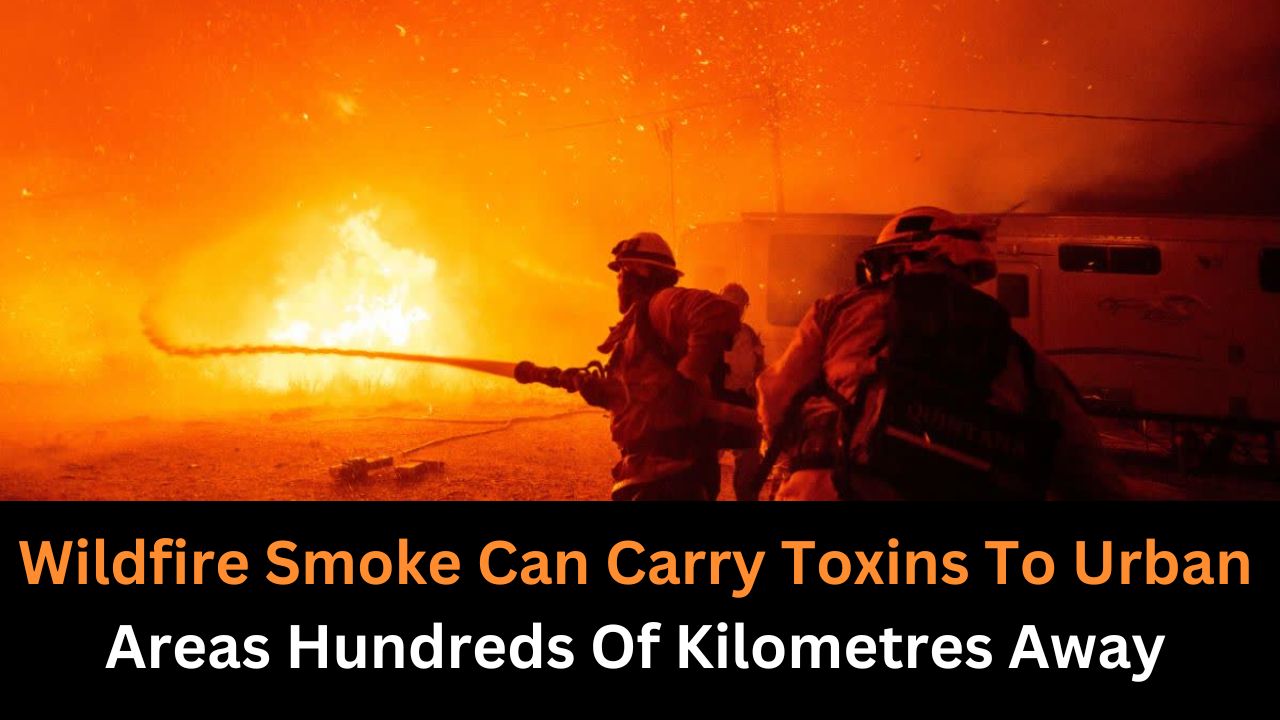From Forest To City: Wildfire Smoke Can Carry Toxins To Urban Areas Hundreds Of Kilometres Away
Wildfire smoke carries harmful PAHs to urban areas, impacting air quality and posing hidden health risks, according to a McMaster University study.
Hyderabad:
Catastrophic wildfires devasted Los Angeles last month, destroying thousands of structures and acres of land. Last year, the wildfire season in Canada destroyed an estimated 45.7 million acres. While such calamities harm lives and livelihoods as they occur, they also have the potential to affect faraway areas, suggests a new study.
According to a study by McMaster researchers, published in the journal Environmental Science & Technology, plumes of wildfire smoke can carry contaminants hundreds of kilometres, leaving a lingering toxic footprint that has the potential to be re-released into the environment.
The study forecasts increasing frequency and severity of wildfires due to climate change, defining such events to be troubling sources of pollution in urban areas.
Wildfire Smoke: A Source of PAHs for urban areas
"Wildfire smoke features a complex mixture of pollutants, including polycyclic aromatic hydrocarbons (PAHs), a class of carcinogenic compounds that can also cause mutations in nature," McMaster University researchers said, adding that PAHs are produced whenever incomplete combustion occurs, including when wood burns.
Iris Chan, lead author and a graduate student in the Department of Chemistry and Chemical Biology, explains that the study was motivated by the large increase in wildfire frequency and severity in Western Canada.
While acknowledging public awareness and research on air quality related to North American wildfires, Chan pointed out that the "long-term impact of smoke drifting into cities is virtually unknown".
Urban landscapes are dominated by impermeable structures and surfaces, which over time accumulate urban grime-- a buildup of deposited particles and other chemical compounds that can hold and re-release pollutants such as PAHs.
The study methodology
Researchers conducted a study in Kamloops and Calgary from August to November 2021, using kits with glass beads to collect samples that mimic urban surfaces like windows. The samples were analysed at McMaster University to investigate correlations between surface-grime PAHs and fire activity.
In Calgary, toxin levels nearly doubled when smoke from fires in Saskatchewan, about 500 kilometres away, arrived, suggesting a link since no other large-scale pollution events were present. In Kamloops, they identified a sharp increase in toxins even without significant wildfire events in the region. Based on the specific composition of samples, researchers concluded that the uptick was due to a hyper-local burn, likely a neighbourhood campfire.
The research team is analysing samples from multiple cities in Canada and the United States collected during the 2022 wildfire season. They have also started a pilot project with Environment Hamilton to collect and analyse dust and grime samples in city neighbourhoods to determine the amount and content of these deposits.
Read More : World Cancer Day Awareness Rally in Bagalkot | Spreading Hope and Education Against Cancer"

